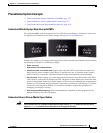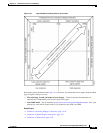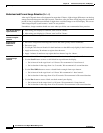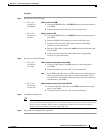
14-3
User Guide for Cisco Digital Media Manager 5.2.x
OL-15762-03
Chapter 14 Touchscreens, Projectors, and Displays
Concepts
Presentation System Concepts
• Understand Which Displays Work Best with DMPs, page 14-3
• Understand How to Choose Media Signal Cables, page 14-3
• Understand and Prevent Image Retention (Burn-in), page 14-6
Understand Which Displays Work Best with DMPs
We certify that DMPs work as designed with Cisco LCD flat-screen displays. All displays in this series
are engineered for intensive use in public settings. See http://cisco.com/go/dms/lcd.
In most cases, DMPs can use displays that comply with modern, international standards. We recommend
the following if you must use a third-party display.
• Digital, not analog.
• High-definition, not standard-definition.
• Professional-grade, not consumer-grade.
Digital signs and public IPTV installations run many more
hours each day than a consumer-grade display is engineered to run. A consumer-grade system is
likely to fail years sooner than a professional-grade system would under these circumstances.
• LCD, not plasma. Digital signage uses static images more often than it uses full-motion video. Most
often, content is web-based or animated in Flash. The nature of these media types means that some
pixels are not updated frequently in digital signage. LCDs are less susceptible to burn-in than plasma
displays are. Even though image persistence is sometimes a problem on LCD displays, it is almost
always self-correcting and is unlikely to occur when you follow manufacturer guidelines for
managing your displays correctly.
• Built-in support for RS-232 signalling. This recommendation is important in direct proportion to the
number of displays that you will manage.
Understand How to Choose Media Signal Cables
Caution Poorly shielded cable can sometimes promote undesired signal leakage (egress), interference from over-the-air
signals (ingress), or crosstalk between cables that are in close physical proximity.


















